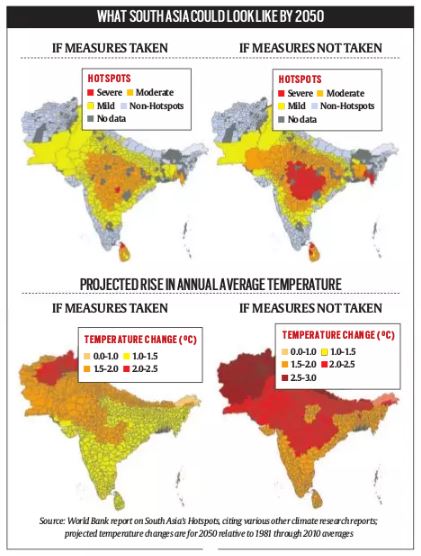7667766266
enquiry@shankarias.in
Why in news?
World Bank has released South Asia’s Hotspots - The Impact of Temperature and Precipitation Changes on Living Standards report.
What are the findings of the World bank report?

What are the concerns spotlighted by the report?
What are the scenarios taken into account by the report?
How will such scenarios play out in India?
Source: The Indian Express